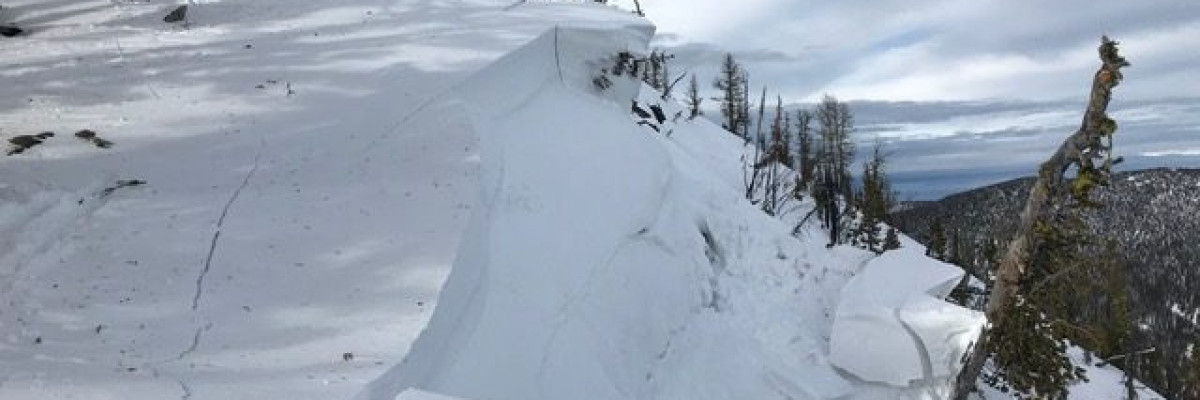The current avalanche danger is Considerable in the west central Montana backcountry on all slopes. Dangerous avalanche conditions exist. Careful snowpack evaluation, cautious route-finding, and conservative decision-making are essential today. Look for the avalanche danger to increase throughout the day and go to High with the predicted weather forecast.
Good morning, this is Travis Craft with the West Central Montana Avalanche Center’s avalanche advisory for December 18, 2018. This danger rating does not apply to operating ski areas, expires at midnight tonight and is the sole responsibility of the U.S. Forest Service.
Weather and Snowpack
Mountain temperatures range from 28 F to 31 F in the region. In the Bitterroot winds are 17 mph with gusts of 25 mph out of the SSE. In the northern part of the advisory area, winds are reading 11 mph with gusts of 17 mph out of the SE. The forecast area received 1 to 2 inches of new snow in the last 24 hours.
We have a very poor snowpack structure(video). There is buried surface hoar that is 12 to 24 inches from the surface. The other is a layer of facets or weak snow on the ground. These two layers are responsible for the near misses and the remote triggering of avalanches from this weekend. (Remote Trigger 01, Cornice Remote Trigger, Remote Trigger 02) See the public observations here. Thank you to everyone who has contributed public observations. These help the community and us the forecasters to be more informed and learn from them.
The primary avalanche problem is persistent slabs. Look for red flags such as whumpfing, collapsing and shooting cracks. Yesterday Logan and I would get off our machines and punch all the way to the ground; this is a sign of instability. Dig a pit to the ground and look for our buried layers and see how reactive they are in stability tests. Avoid traveling under runout zones and think of what terrain is above and below you. The layers in the snowpack are reactive to human triggers and are widespread throughout our forecast area. Travel and recreate on slopes less than 25 degrees.
The second avalanche problem is wind slabs. Look for snowdrifts and smooth, rounded deposits of snow on ridgelines. Avoid traveling on wind drifted terrain. Wind loaded terrain will have a higher likelihood of triggering an avalanche today.
Bottom line the snowpack is weak and can not be trusted. The new snow and wind today will increase the avalanche danger. Recreate on low angle terrain and pay close attention to changing weather conditions.
Avalanche and Weather Outlook
A warm, weak system will move over our area today. It will produce up to 6 inches of snow and have a fluctuating rain line around 5000 ft. See the forecast here. Look for the avalanche danger to increase with this weather event. Pay close attention to changing conditions.
If you do make it out into the hills feel free to share what you see on our public observations page. They are not only helpful to your community but extremely helpful to us.
Ski and ride safe.














